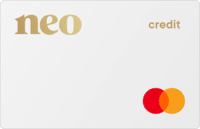
People generally save because they have a project in mind. For various reasons, many will prefer not to invest the saved money, either because the project will be completed soon, or because they don’t want to take on any risk. A savings account is a simple and secure way to accumulate money to carry out these projects. Choosing the right savings account is therefore very important in order to obtain maximum interest and achieve your goals faster. Here are some things you should consider before browsing Hardbacon’s Savings Account comparison tool to find the ideal one for you:
What interest rate should your savings account have?
The answer is simple; the highest possible interest rate! Unlike investing in the stock market, where the best performing investments are usually also the riskiest, money in a savings account is safe. Not only is the money not invested, but banking institutions are insured by the Canada Deposit Insurance Corporation (CDIC), an organization that protects the deposits in your savings account. It is therefore in your best interest to seek the highest interest rate.
Hardbacon's Savings Account Comparison tool is a quick way to see the highest rates available in your province. High interest savings accounts offer the best rates, usually between 1.25% and 2.25%. Ideally, try to get an interest rate of 2% or more.
Why try to get more than 2%? The objective of investing is to maintain or increase your purchasing power, and therefore, your ability to purchase goods and services over time. So you need to consider that because of inflation, prices are increasing on average 2% per year in Canada.
This means that if you leave your money in a savings account for 10 years at an interest rate of 1%, you will be able to purchase less, even taking interest into account, than if you had spent your money 10 years earlier.
Pay attention to the fine print
Some high interest savings accounts offer a tiered interest rate. That is, the rate will increase depending on the number of days you keep your account or depending on the amount. For example:
| $0.00 or more | 1.25% |
| $100,000 – $249,999 | 1.40% |
| $250,000 or more | 1,55% |
The interest rate may also decrease after a while. For example: 2.50% during the first 150 days and 0.20% thereafter. This type of promotion allows banks to attract savers by offering very attractive rates, without having to pay this rate over the long term. These promotions can be great, but be sure to do your math. To illustrate this, let's compare two accounts into which we would make a deposit of $5000, and let it “grow” for 12 months.
| A | B |
| Rate: 2.50% and 0.20% after 150 days | Rate: 1.40% |
| Interest: $57 | Interest: $70 |
Account B is therefore the one offering the highest return after 12 months, although at first glance the promotional rate for account A seemed more attractive.
How many transactions do you plan to make in your savings account?
Since savings accounts aren't made for doing day-to-day transactions, many institutions charge fees if you do. If you plan to make multiple transactions, choose an account with no transaction fees that offers the highest possible interest rate. For example, TD has a daily savings account that allows unlimited transfers to the account holder’s other TD accounts and one free transaction (additional transactions have a reduced rate of $1). In the event that you won’t be making any transactions, look only at the return.
What will be the balance in your savings account?
It's important to mention that most savings accounts have no monthly fees. There aren't really any good reasons to choose a fee-based savings account, so avoid them as much as possible. In addition, before opting for a free savings account, make sure there are no conditions, since some savings accounts are only free if you maintain a minimum balance in the account.
What are you going to do with your savings account?
With different rate, transaction fee, and monthly fee options, you have to determine what your priorities are. If you’re looking for a high interest rate, go for a high interest savings account. If you plan to make a few transactions per month, opt for an account with no transaction fees or reduced fees.
Choosing a savings account is a simple process. The important thing is to maximize your return, either through a high interest rate or through no-fee features, to keep your costs as low as possible. Using the Hardbacon Savings Account Comparison tool will help you see all of this information at a glance.






















About The Author: Émilie J.Talbot
Émilie is the Marketing Director at Hardbacon. A former financial security advisor, she is passionate about finance. She understands the importance of sound personal financial advice and aims to write about this topic to help readers make better financial decisions.
More posts by Émilie J.Talbot